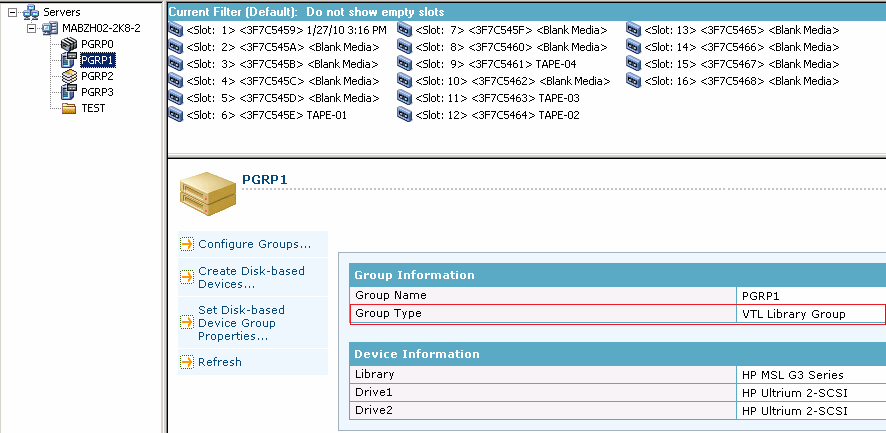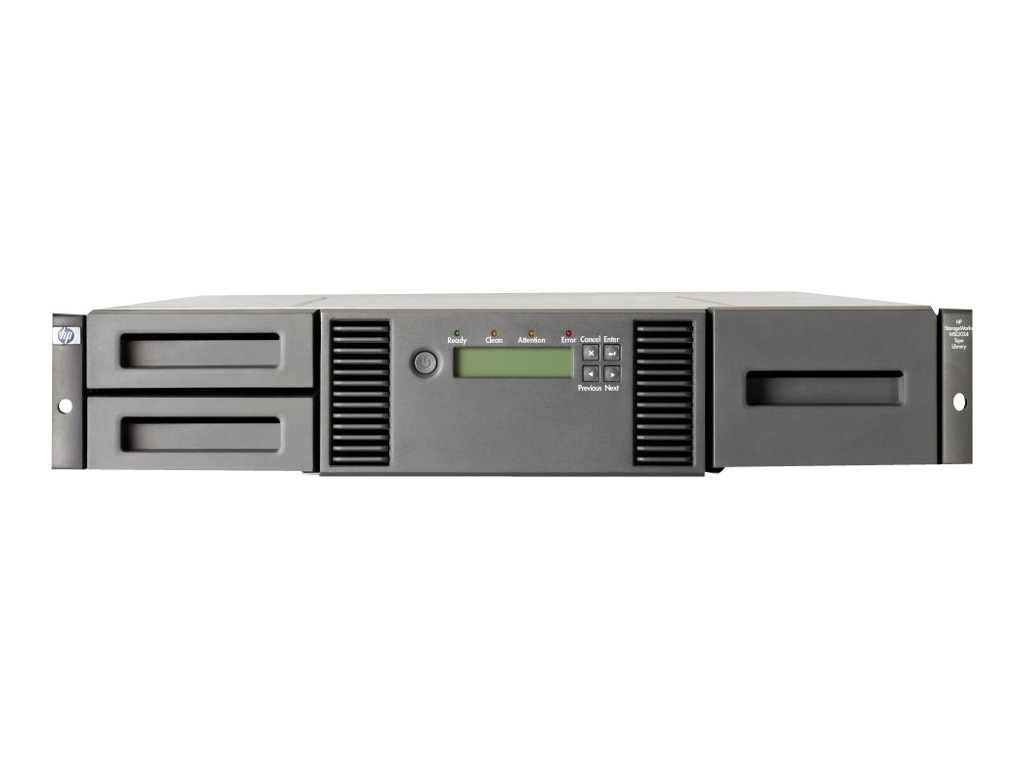Virtual Tape Library Slots
ACSLS supports a new LSM type (StorageTek VTL) which identifies generic virtual libraries as implemented in the FalconStor-based VTL product line. A StorageTek VTL library can be configured, managed, and operated just like any other single-LSM, SCSI-attached library.
- Virtual Tape Library Solutions
- Virtual Tape Libraries
- Ibm Virtual Tape Library
- Azure Virtual Tape Library
ACSLS represents a StorageTek VTL configuration using the PRC-style identifiers (panel, row, column) to which you are familiar. Use these PRC-style identifiers when issuing ACSLS or ACSAPI requests against a StorageTek VTL library. These include cell identifiers (acs, lsm, panel, row, column), drive identifiers (acs, lsm, panel, transport) and CAP identifiers (acs, lsm, cap).
Once the VTX bit x'20' FLAG5 has been turned on in the TMC record, virtual tapes continue to be moved according to the VPD rule, but slot assignment is bypassed. The slot number is set to a dummy value of 9,999,999 (a 'virtual slot'). Virtual I/O slots With the Advanced Library Management System (ALMS), virtual I/O slots enhance the import and export capabilities of the library. When ALMS is enabled in a TS3500 tape library, virtual I/O slots are enabled by default so that the library automatically queues all cartridge moves between the I/O station and the storage slots. Designed for Virtual Tape Libraries, the Virtual Tape Library (VTL) Unlimited Drive Option provides simple, cost efficient pricing for VTL devices by supporting an unlimited number of virtual tape drives and slots without the need to license each tape drive on a Backup Exec Media server separately. After configuring a library for shared usage, the slots all report, but it shows them as empty. When I run a fast inventory, it seems to run forever and no tape information shows up. The Scalar i80 does show the tapes with barcodes.

Supported Configurations

The StorageTek VTL configuration is recorded in the acsss_config.log file when a library is configured to ACSLS. This file is generally used only for diagnostic purposes. Panel descriptions are also displayed during dynamic configuration (using the config utility).
The following table describes the VTL configurations supported by ACSLS.
| Number of Storage Cells | Starting Element Address | Number of Drives | Starting Element Address | Number of Import/Export Elements | Starting Element Address |
|---|---|---|---|---|---|
| 1-10,000 | 1000 | 1-100 | 500 | 1-20 | 10 |
Virtual Tape Library Solutions
Number of storage cells: 1 to 10,000
Starting element address: 1000
Number of drives: 1 to 100
Starting element address: 500
Number of import/export elements: 1 to 20
Starting element address: 10
The following describes library components support:
Panels
Each supported configuration is presented as a set of panels where:
Panel 0 - contains a CAP only
Panel 1-10 - contains storage cells and drives
Panel 11-50- contains storage cells
CAPs
A single CAP is supported. It is identified as CAP 0, and can contain up to 20 CAP cells. The CAP is defined on panel 0 of a StorageTek VTL.
Storage Cells
Storage cells are organized into panels containing 200 cells per panel. The largest configuration contains 50 200-cell storage panels for a total of 10,000 cells.
Storage cells are defined on panels 1-50 of a StorageTek VTL.
Drives
Drives are organized into panels containing up to 10 drives per panel. The largest drive configuration contains 10 drive panels for a total of 100 drives.
Drives are defined on panels 1-10 of a StorageTek VTL.
PTPs
Pass-thru ports are not supported.
VTL Behavior
The following behaviors apply specifically to the VTL:
Enter Operations
Enteroperations in ACSLS are not useful for adding tape volumes to a StorageTek VTL library. In order to discover new volumes in a VTL library, anauditshould be performed against that library. This includes the discovery of volumes that may have been imported from the VTL virtual vault.Enteroperations are not explicitly rejected for StorageTek VTL. If you initiate anenteroperation, it can simply be canceled.Eject Operations
Ejectoperations in ACSLS are supported. Any ejected volumes are viewed by the VTL product as now residing in the virtual vault, but this is a VTL feature only - ACSLS is not aware of the virtual vault.Mount and Dismount Operations
ACSLS
mountoptions (read-only, bypass) anddismountoptions (force) are accepted, but ignored by the StorageTek VTL library. In addition, a normal dismount (without the force option) appears to function as if the force option had been specified.Caution:
Be careful when performing dismount operations, as they may dismount a virtual tape volume while data path operations are in progress.Virtual Tape Drives
After adding or removing virtual drives in a VTL, use the
configdrives utility to re-examine the drive configuration in ACSLS. When removing virtual tape drives from the VTL, you will need to delete the drives, not just un-assign them, using the VTL Console. Assignment or un-assignment of virtual drives affects the data path and does not affect ACSLS.

Configuring the VTL to ACSLS
This section describes the prerequisites and installation procedures when configuring the VTL to ACSLS.
Prerequisites
Before configuring the VTL to ACSLS, you must meet the following prerequisites:
ACSLS has been installed, and includes a fibre-channel HBA
VTL system has been installed
There is fibre-channel connectivity between the systems (an ACSLS initiator port must be connected to a VTL target port)
Virtual Tape Libraries

Installation
Ibm Virtual Tape Library
To configure the VTL to ACSLS, perform the following steps:
Azure Virtual Tape Library
Create a virtual library (StorageTek-VTL) using the VTL console.
Notes:
When creating a virtual tape library for use by ACSLS, the tape identifiers for that library should match the traditional 6-character volume label format supported in ACSLS.
The VTL Console allows you to create a StorageTek VTL library which exceeds the limits that are supported by ACSLS (10,000 slots, 100 drives). However, if you try to configure an unsupported configuration to ACSLS, the configuration request will fail.
When creating a new StorageTek VTL library, the VTL Console gives a warning setting the slot count higher than 678. This warning limit is based on the L700 capacity, and can be ignored for StorageTek VTL library model.
For procedures, refer to the StorageTek Virtual Tape VTL Plus 2.0 (Update 2) Library Software Configuration Guide.
Assign the VTL library to ACSLS.
For procedures, refer to the StorageTek Virtual Tape VTL (Plus 2.0 Update 2) Library Software Configuration Guide.
Create a SCSI mchanger device driver.
ACSLS is able to automatically discover StorageTek VTL libraries and to create the corresponding
/dev/mchangerentries. This discovery takes place when running theinstall_scsi_sol.shscripts during installation.Refer to 'Installing Connections to Your Library Hardware'.
Configure VTL to ACSLS.
Once the VTL components are operational, configure VTL to ACSLS.
Use the following command:
acsss_config
For more information, refer to 'Setting CSI Tuning Variables' or
config acs new(see 'Adding a new ACS'.Audit the VTL library.
After configuring a StorageTek VTL library to ACSLS, an
auditmust be performed in order to discover the virtual tape volumes, and to identify any inaccessible cells (a panel may only be partially accessible).Use the
display lsm * -f type serial_numcommand to view the VTL configuration.